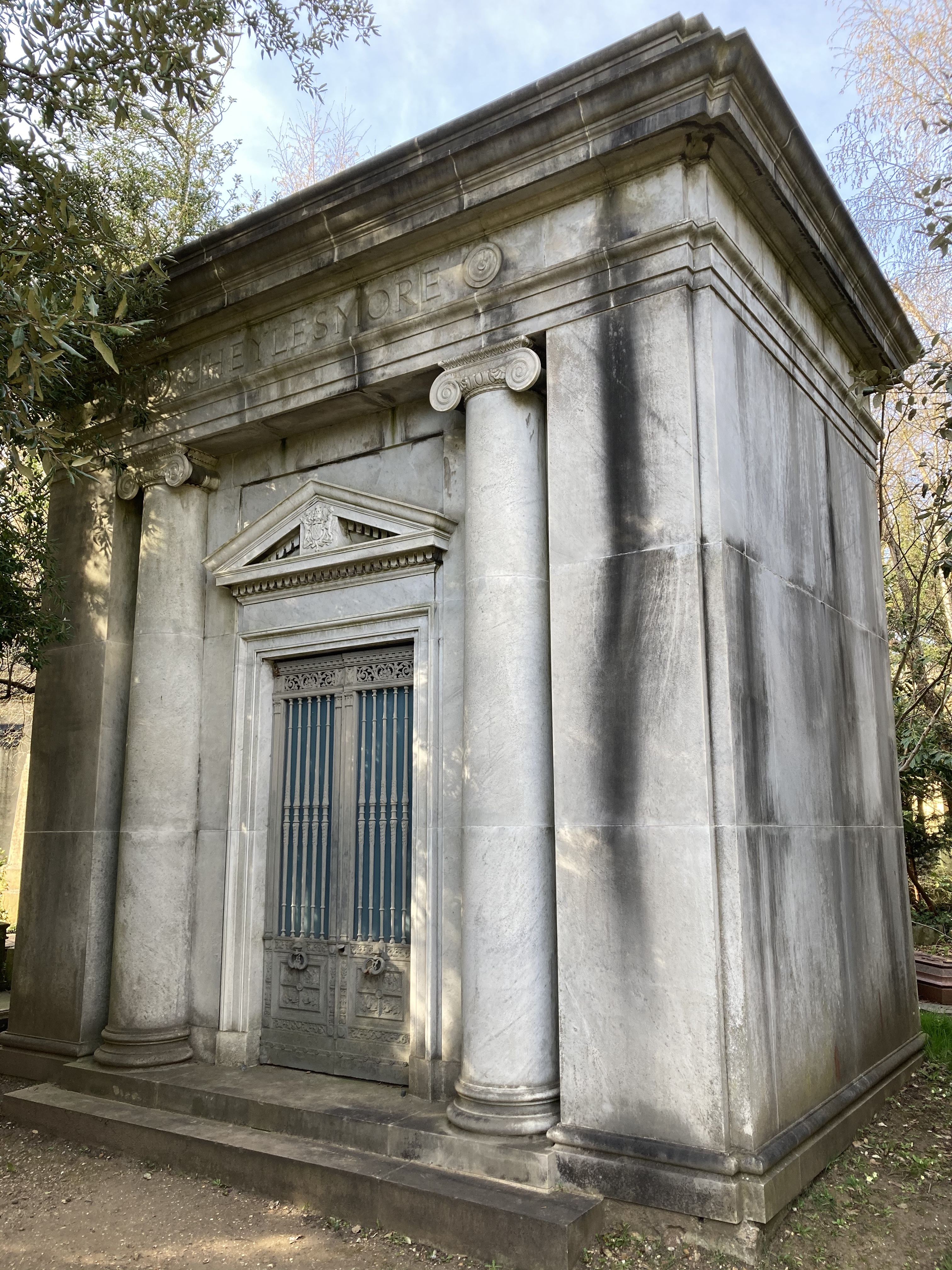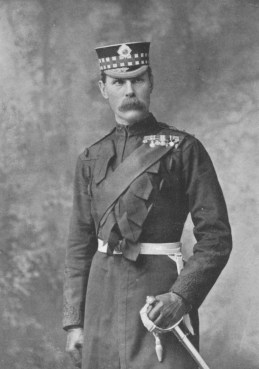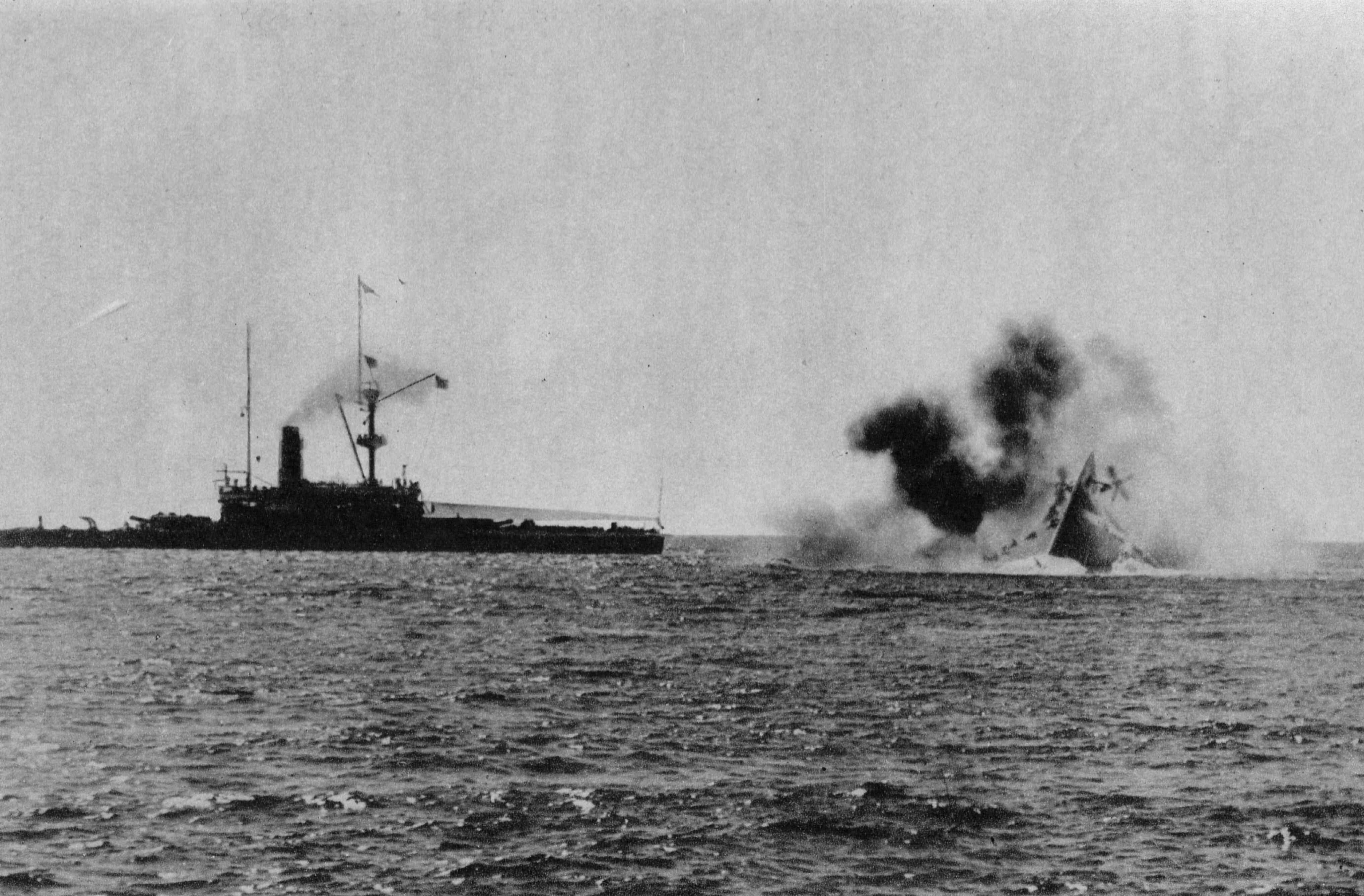|
Cheylesmore Memorial
The Cheylesmore Memorial is a Grade II listed outdoor stone memorial dedicated to British Army officer Herbert Eaton, 3rd Baron Cheylesmore, located in the Victoria Embankment Gardens in Westminster, London, England. The memorial was designed by Edwin Lutyens and unveiled in 1930. At the dedication ceremony on 17 July 1930, the memorial was unveiled by Prince Arthur, Duke of Connaught and Strathearn, the third son of Queen Victoria. Those attending included John Jellicoe, 1st Earl Jellicoe and Paul Methuen, 3rd Baron Methuen Field Marshal Paul Sanford Methuen, 3rd Baron Methuen, (1 September 1845 – 30 October 1932) was a British Army officer. He served in the Third Anglo-Ashanti War in 1873 and then in the expedition of Sir Charles Warren to Bechuanaland in th .... The memorial is made of Portland stone and has seats backing on to a decorative screen facing a small pond. An inscription at the centre of the screen reads: References External links * 1930 est ... [...More Info...] [...Related Items...] OR: [Wikipedia] [Google] [Baidu] |
Herbert Eaton, 3rd Baron Cheylesmore
Major-General Herbert Francis Eaton, 3rd Baron Cheylesmore, GBE, KCMG, KCVO (25 January 1848 – 29 July 1925) was a British Army officer, sportsman, and peer. He was Chairman of London County Council, chairman of the National Rifle Association and presided over courts martial during the First World War. Early life Eaton was the son of Henry Eaton, 1st Baron Cheylesmore and his wife Charlotte Gorham Harman. His father made money in the silk trade, helped to manage insurance companies, and was MP for Coventry. Eaton was educated at Eton in Mr. Warre's house. He was nicknamed "Cheeky Eaton" and rowed bow in the winning Eton House four crew in 1866. He also a marksman and shot for Eton in the Ashburton Shield in 1866. Military career At the age of twenty Eaton joined the Grenadier Guards, and went to Dublin, where he was given the nickname "Brown" by his brother officers. He rowed for the 1st Battalion Grenadier Guards in the 1877 Grand Challenge Cup at Henley Royal Reg ... [...More Info...] [...Related Items...] OR: [Wikipedia] [Google] [Baidu] |
Paul Methuen, 3rd Baron Methuen
Field Marshal Paul Sanford Methuen, 3rd Baron Methuen, (1 September 1845 – 30 October 1932) was a British Army officer. He served in the Third Anglo-Ashanti War in 1873 and then in the expedition of Sir Charles Warren to Bechuanaland in the mid-1880s. He took a prominent role as General Officer Commanding the 1st Division in the Second Boer War. He suffered a serious defeat at the Battle of Magersfontein, during which he failed to carry out adequate reconnaissance and accordingly his artillery bombarded the wrong place leading to the Highland Brigade taking heavy casualties. He was later captured by the Boers at Tweebosch. After the war, he became General Officer Commanding-in-Chief in South Africa in 1908, Governor and Commander-in-Chief of Natal in 1910 and then Governor and Commander-in-Chief of Malta in 1915. Early life Paul Sanford Methuen was born at Corsham Court, Wiltshire, the eldest of three sons of Frederick Methuen, 2nd Baron Methuen and his wife Anna Horati ... [...More Info...] [...Related Items...] OR: [Wikipedia] [Google] [Baidu] |
Monuments And Memorials In London
A monument is a type of structure that was explicitly created to commemorate a person or event, or which has become relevant to a social group as a part of their remembrance of historic times or cultural heritage, due to its artistic, historical, political, technical or architectural importance. Some of the first monuments were dolmens or menhirs, megalithic constructions built for religious or funerary purposes. Examples of monuments include statues, (war) memorials, historical buildings, archaeological sites, and cultural assets. If there is a public interest in its preservation, a monument can for example be listed as a UNESCO World Heritage Site. Etymology It is believed that the origin of the word "monument" comes from the Greek ''mnemosynon'' and the Latin ''moneo'', ''monere'', which means 'to remind', 'to advise' or 'to warn', however, it is also believed that the word monument originates from an Albanian word 'mani men' which in Albanian language means 'remembe ... [...More Info...] [...Related Items...] OR: [Wikipedia] [Google] [Baidu] |
Military Memorials In London
A military, also known collectively as armed forces, is a heavily armed, highly organized force primarily intended for warfare. It is typically authorized and maintained by a sovereign state, with its members identifiable by their distinct military uniform. It may consist of one or more military branches such as an army, navy, air force, space force, marines, or coast guard. The main task of the military is usually defined as defence of the state and its interests against external armed threats. In broad usage, the terms ''armed forces'' and ''military'' are often treated as synonymous, although in technical usage a distinction is sometimes made in which a country's armed forces may include both its military and other paramilitary forces. There are various forms of irregular military forces, not belonging to a recognized state; though they share many attributes with regular military forces, they are less often referred to as simply ''military''. A nation's military ma ... [...More Info...] [...Related Items...] OR: [Wikipedia] [Google] [Baidu] |
Grade II Listed Monuments And Memorials
Grade most commonly refers to: * Grade (education), a measurement of a student's performance * Grade, the number of the year a student has reached in a given educational stage * Grade (slope), the steepness of a slope Grade or grading may also refer to: Music * Grade (music), a formally assessed level of profiency in a musical instrument * Grade (band), punk rock band * Grades (producer), British electronic dance music producer and DJ Science and technology Biology and medicine * Grading (tumors), a measure of the aggressiveness of a tumor in medicine * The Grading of Recommendations Assessment, Development and Evaluation (GRADE) approach * Evolutionary grade, a paraphyletic group of organisms Geology * Graded bedding, a description of the variation in grain size through a bed in a sedimentary rock * Metamorphic grade, an indicatation of the degree of metamorphism of rocks * Ore grade, a measure that describes the concentration of a valuable natural material in the surround ... [...More Info...] [...Related Items...] OR: [Wikipedia] [Google] [Baidu] |
Grade II Listed Buildings In The City Of Westminster
Grade most commonly refers to: * Grade (education), a measurement of a student's performance * Grade, the number of the year a student has reached in a given educational stage * Grade (slope), the steepness of a slope Grade or grading may also refer to: Music * Grade (music), a formally assessed level of profiency in a musical instrument * Grade (band), punk rock band * Grades (producer), British electronic dance music producer and DJ Science and technology Biology and medicine * Grading (tumors), a measure of the aggressiveness of a tumor in medicine * The Grading of Recommendations Assessment, Development and Evaluation (GRADE) approach * Evolutionary grade, a paraphyletic group of organisms Geology * Graded bedding, a description of the variation in grain size through a bed in a sedimentary rock * Metamorphic grade, an indicatation of the degree of metamorphism of rocks * Ore grade, a measure that describes the concentration of a valuable natural material in the surroun ... [...More Info...] [...Related Items...] OR: [Wikipedia] [Google] [Baidu] |
1930 Sculptures
Year 193 ( CXCIII) was a common year starting on Monday (link will display the full calendar) of the Julian calendar. At the time, it was known as the Year of the Consulship of Sosius and Ericius (or, less frequently, year 946 ''Ab urbe condita''). The denomination 193 for this year has been used since the early medieval period, when the Anno Domini calendar era became the prevalent method in Europe for naming years. Events By place Roman Empire * January 1 – Year of the Five Emperors: The Roman Senate chooses Publius Helvius Pertinax, against his will, to succeed the late Commodus as Emperor. Pertinax is forced to reorganize the handling of finances, which were wrecked under Commodus, to reestablish discipline in the Roman army, and to suspend the food programs established by Trajan, provoking the ire of the Praetorian Guard. * March 28 – Pertinax is assassinated by members of the Praetorian Guard, who storm the imperial palace. The Empire is auctioned off ... [...More Info...] [...Related Items...] OR: [Wikipedia] [Google] [Baidu] |
1930 Establishments In England
Year 193 ( CXCIII) was a common year starting on Monday (link will display the full calendar) of the Julian calendar. At the time, it was known as the Year of the Consulship of Sosius and Ericius (or, less frequently, year 946 ''Ab urbe condita''). The denomination 193 for this year has been used since the early medieval period, when the Anno Domini calendar era became the prevalent method in Europe for naming years. Events By place Roman Empire * January 1 – Year of the Five Emperors: The Roman Senate chooses Publius Helvius Pertinax, against his will, to succeed the late Commodus as Emperor. Pertinax is forced to reorganize the handling of finances, which were wrecked under Commodus, to reestablish discipline in the Roman army, and to suspend the food programs established by Trajan, provoking the ire of the Praetorian Guard. * March 28 – Pertinax is assassinated by members of the Praetorian Guard, who storm the imperial palace. The Empire is auctioned off ... [...More Info...] [...Related Items...] OR: [Wikipedia] [Google] [Baidu] |
Portland Stone
Portland stone is a limestone from the Tithonian stage of the Jurassic period quarried on the Isle of Portland, Dorset. The quarries are cut in beds of white-grey limestone separated by chert beds. It has been used extensively as a building stone throughout the British Isles, notably in major public buildings in London such as St Paul's Cathedral and Buckingham Palace. Portland Stone is also exported to many countries—being used for example in the United Nations headquarters in New York City. Geology Portland Stone formed in a marine environment, on the floor of a shallow, warm, sub-tropical sea probably near land (as evidenced by fossilized driftwood, which is not uncommon). When seawater is warmed by the sun, its capacity to hold dissolved gas is reduced; consequently, dissolved carbon dioxide (CO2) is released into the atmosphere as a gas. Calcium and bicarbonate ions within the water are then able to combine, to form calcium carbonate (CaCO3) as a precipitate. The proces ... [...More Info...] [...Related Items...] OR: [Wikipedia] [Google] [Baidu] |
John Jellicoe, 1st Earl Jellicoe
Admiral of the Fleet John Rushworth Jellicoe, 1st Earl Jellicoe, (5 December 1859 – 20 November 1935) was a Royal Navy officer. He fought in the Anglo-Egyptian War and the Boxer Rebellion and commanded the Grand Fleet at the Battle of Jutland in May 1916 during the First World War. His handling of the fleet at that battle was controversial. Jellicoe made no serious mistakes and the German High Seas Fleet retreated to port, at a time when defeat would have been catastrophic for Britain, but the public was disappointed that the Royal Navy had not won a more dramatic victory given that they outnumbered the enemy. Jellicoe later served as First Sea Lord, overseeing the expansion of the Naval Staff at the Admiralty and the introduction of convoys, but was relieved at the end of 1917. He also served as the Governor-General of New Zealand in the early 1920s. Early life Jellicoe was born on 5 December 1859 in Southampton, Hampshire. Jellicoe was the son of John Henry Jellicoe, a capta ... [...More Info...] [...Related Items...] OR: [Wikipedia] [Google] [Baidu] |
Victoria Embankment Gardens
The Victoria Embankment Gardens are a series of gardens on the north side of the River Thames between Blackfriars Bridge and Westminster Bridge in London. History Between 1865 and 1870 the northern embankment and sewer was built by Sir Joseph Bazalgette. In 1874 gardens were created on the reclaimed land on the inward side of the roadway named ''Victoria Embankment''. There were four sections created, the Temple Garden to the east, the Main Gardens to the west (originally known as the Adelphi Gardens), and two other sections to the south following the bend of the Thames. The gardens are now under the control of the City of Westminster. Features The gardens are fully fenced and are open during designated hours. They open at 07:30 throughout the year, but close at varying times between 16:30 during the coldest months and 21:30 at the height of summer. All gardens have gravel paths that are well lined with seats mainly given as memorials. The river side of the gardens i ... [...More Info...] [...Related Items...] OR: [Wikipedia] [Google] [Baidu] |
British Newspaper Archive
The British Newspaper Archive web site provides access to searchable digitized archives of British and Irish newspapers. It was launched in November 2011. History The British Library Newspapers section was based in Colindale in north London, until 2013, and is now divided between the St Pancras and Boston Spa sites. The library has an almost complete collection of British and Irish newspapers since 1840. This is partly because of the legal deposit legislation of 1869, which required newspapers to supply a copy of each edition of a newspaper to the library. London editions of national daily and Sunday newspapers are complete back to 1801. In total, the collection consists of 660,000 bound volumes and 370,000 reels of microfilm containing tens of millions of newspapers with 52,000 titles on 45 km of shelves. After the closure of Colindale in November 2013, access to the 750 million original printed pages was maintained via an automated and climate-controlled storage facilit ... [...More Info...] [...Related Items...] OR: [Wikipedia] [Google] [Baidu] |






